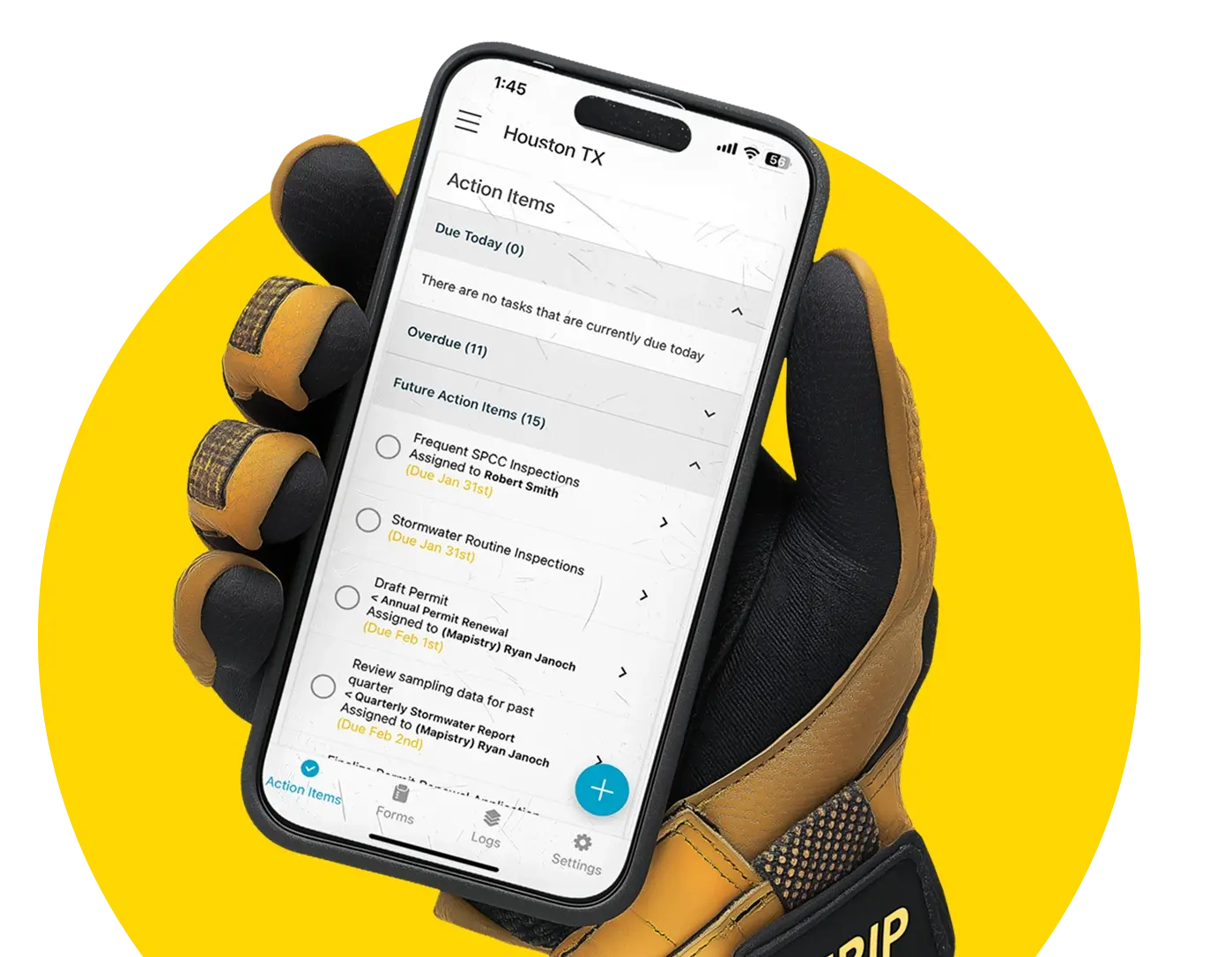Graniterock: From paper-based compliance to complete visibility
Graniterock, a leading construction materials company, struggled with environmental compliance due to outdated manual record-keeping.
.webp?width=1000&height=667&name=attachment%20(2).webp)
Graniterock, a leading construction materials company with 15 locations, faced significant environmental compliance challenges due to outdated, manual record-keeping.
Environmental managers had to visit sites to track compliance. This was extremely labor-intensive and made it nearly impossible to catch compliance issues without visiting 15 locations any given week.
By implementing Mapistry, Graniterock streamlined inspections, improved data accuracy, and enhanced compliance oversight across its operations.
The challenge: Keeping 15 locations compliant using paper records
Graniterock’s compliance process relied heavily on paper records stored on-site, manual inspections, and spreadsheets. This led to problems like:
- Lack of visibility because records were only stored locally on paper
- Pencil-whipped inspection reports, where forms were completed with minimal attention to actual conditions
- Time-consuming site visits to verify and track compliance
"The only way to figure out who was doing what was to go to the branch and see what was happening – see what was in the binder. You’d find a year's worth of inspection forms where every box was just checked yes, yes, yes."
– Reed Carter, Director of Environmental Compliance
Not changing their processes would have led to enforcement action
Without a digital, centralized compliance system, Graniterock faced:
- Regulatory fines due to missing or inaccurate records
- Not being able to disprove alleged violations
- Thousands of wasted hours from manual compliance processes
Why Graniterock chose Mapistry
Graniterock sought a system that would:
- Centralize and digitize compliance data
- Improve accountability for inspections and corrective actions
- Automate manual processes in reporting and data collection
"With Mapistry, we now have a single source of truth. There's no guesswork, and compliance tasks are completed more efficiently." – Nikhita Collins, Environmental Project Manager
The transformation: A reliable compliance system with automated processes
Graniterock adopted Mapistry across its 15 locations for:
- Inspections and compliance tracking
- Air emissions monitoring and mapping
- Stormwater compliance and SPCC inspections
- Integration with 13 internal systems via Mapistry’s API
Improved efficiency, compliance tracking, and visibility into operations
After implementing Mapistry, Graniterock experienced:
- Increased efficiency – Teams spent less time tracking paperwork, driving on-site, or putting out compliance fires
- Improved compliance tracking – Centralized data reduced risks of missing reports and allowed Graniterock to get ahead of EPA fines
- Better collaboration – Employees at all levels gained visibility into compliance performance. Anyone could step in at a moment’s notice if an employee left the company.
"The shift to digital inspections was transformative. We went from spending hours tracking down paperwork to having everything at our fingertips. One of the biggest advantages has been the ability to empower teams at every level. People feel more responsible and engaged in our environmental performance." – Nikhita Collins
Tired of chasing paperwork and risking fines?
Graniterock transformed its compliance operations with Mapistry—saving time, eliminating guesswork, and gaining total visibility across 15 locations. You can too.
Let’s talk about how Mapistry can help your team ditch the manual work and stay ahead of compliance risks.
Book a call with our team today.



%201%20(2).png)
.png)
.svg)
